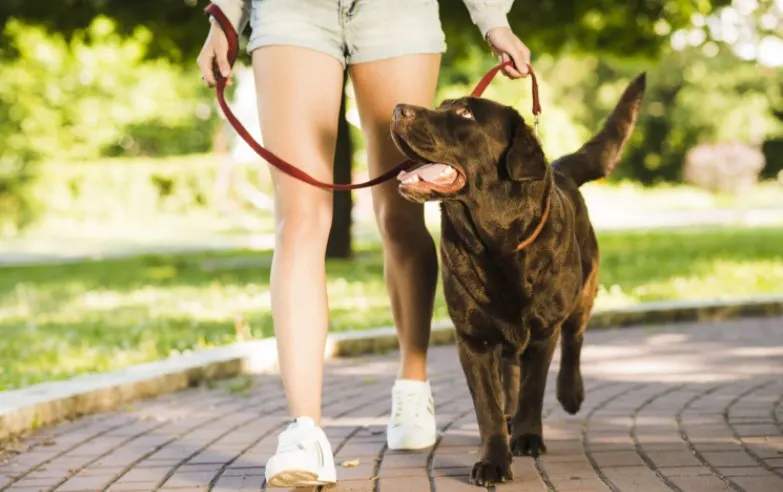We all know dogs love their walks – a tail wag at the sound of a leash says it all. Regular exercise keeps your dog fit, happy, and mentally sharp. But did you know that too much of a good thing can actually do more harm than good?
Whether you're walking through Phoenix Park or tossing a ball in your back garden, it’s important to know how much is too much. Here’s how to spot the signs of over-exercise, and what Irish dog owners should keep in mind to keep their pups in top form.
The Danger of “Weekend Warrior” Syndrome
During the week, life gets busy. Work, school runs, the usual chaos. Come the weekend, it’s tempting to cram in long walks, hikes, or play sessions to make up for lost time. But suddenly asking your dog to go from zero to sixty can backfire.
Without consistent activity during the week, this burst of effort can stress their joints and muscles – especially in young pups or older dogs. Not all dogs are built the same, and many will push themselves harder than they should just to keep up with you.
5 Signs Your Dog Might Be Overdoing It
1. Worn or Sore Paw Pads
Too much running on hard ground, especially on pavements or rocky paths, can wear down paw pads. If your dog is limping, licking their paws, or reluctant to walk, take a look – red or cracked pads are a big red flag.
2. Muscle Stiffness
After a long outing, your dog might struggle to get up after lying down or seem slower than usual. If they hesitate on stairs or avoid jumping onto the sofa, sore muscles could be the culprit.
3. Heat Fatigue
Irish summers might not be tropical, but dogs can still overheat – especially flat-faced breeds like Bulldogs or Pugs. If your dog is panting heavily, slowing down, or looking dazed, it’s time for a rest and some shade. Always bring water on walks, even on cloudy days.
4. Joint Strain
High-impact activity like chasing balls or constant jumping can wear down joints over time. Dogs with existing joint issues – or breeds with long backs like Dachshunds – are especially vulnerable. Watch for limping or a sudden reluctance to move.
5. Changes in Behaviour
Is your usually playful dog suddenly grumpy or quiet? Or maybe they’ve flopped down mid-walk and won’t budge? That could be your dog’s way of saying, “I’ve had enough today.”
How Much Exercise Does Your Dog Actually Need?
There’s no one-size-fits-all answer. Every dog is different.
-
Energetic breeds like Collies or Spaniels need a good mix of daily walks, mental games, and space to run.
-
Flat-nosed or toy breeds may prefer short, gentle strolls – especially in warm weather.
-
Puppies need frequent, short bursts of activity to avoid harming developing joints.
-
Older dogs benefit from light, consistent movement to keep joints flexible.
Consistency is key. A short daily walk is better than one exhausting adventure every Saturday.
Tips to Keep It Safe and Sensible
-
Start slow: Build up endurance gradually if your dog isn’t used to regular exercise.
-
Avoid the midday sun: Especially in summer. Early mornings or evenings are best.
-
Keep rest days: Just like us, dogs need downtime to recover.
-
Mix it up: Physical activity is great, but don’t forget mental stimulation – try nose games or puzzle feeders.
-
Check in with your vet: Especially if your dog has any health issues or you’re planning a big increase in activity.
Final Thoughts
Dogs love to move, but they also rely on us to set the pace. Overdoing it – even with the best intentions – can lead to injury, pain, or long-term health issues.
A balanced, regular routine keeps your dog not only physically fit but mentally happy too. And when in doubt? It’s always OK to skip that second walk and enjoy a cuddle on the couch instead.


